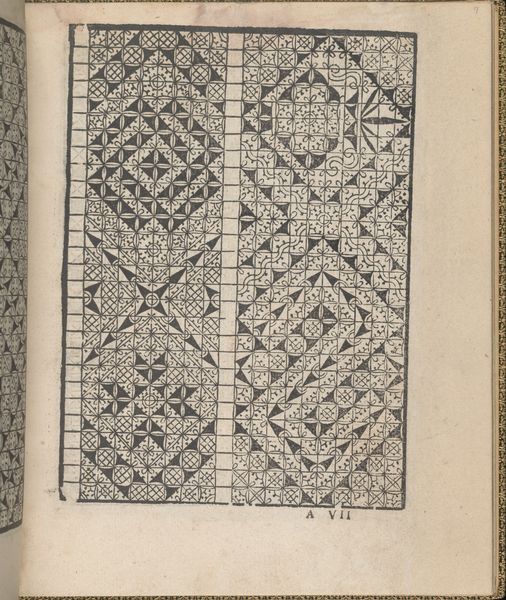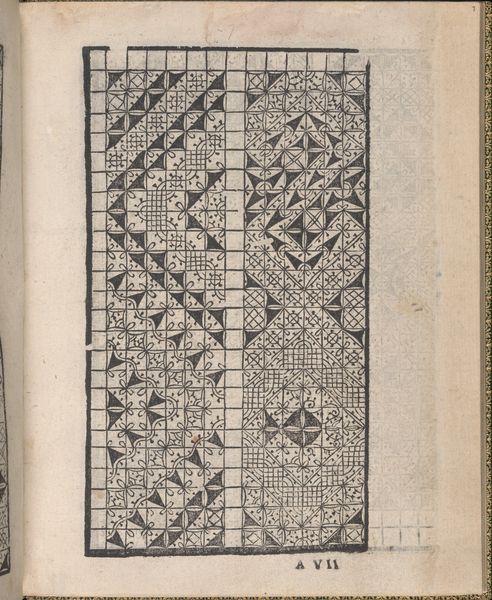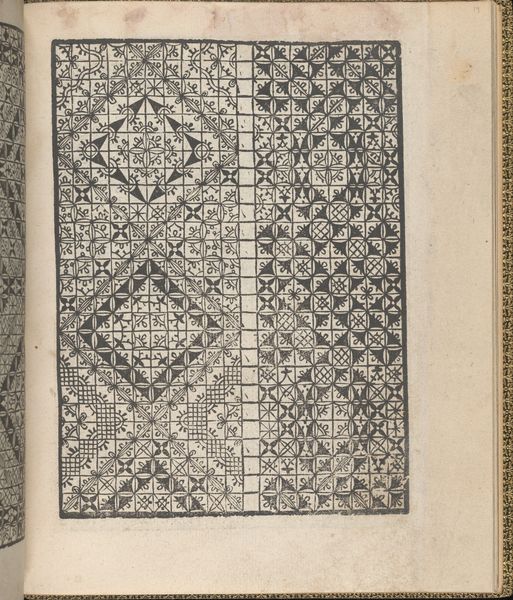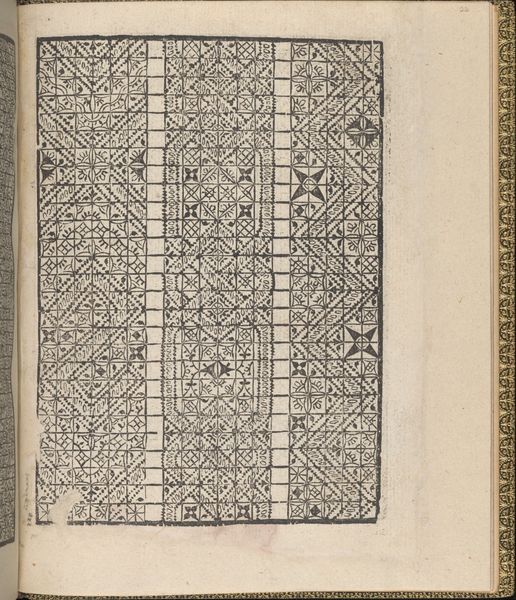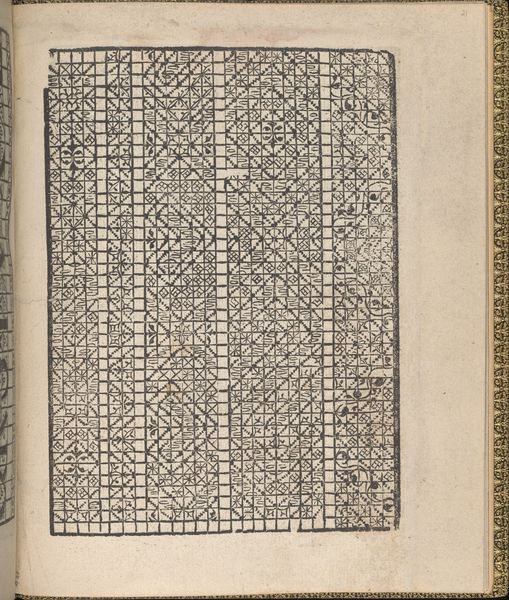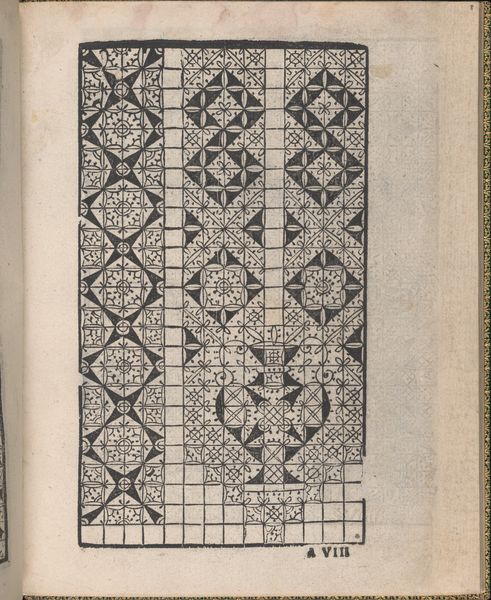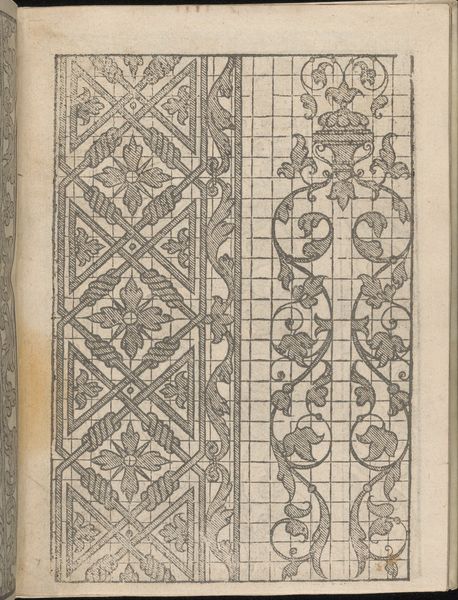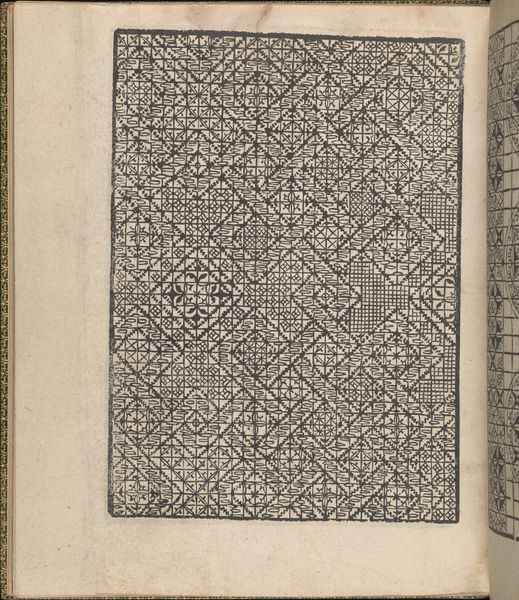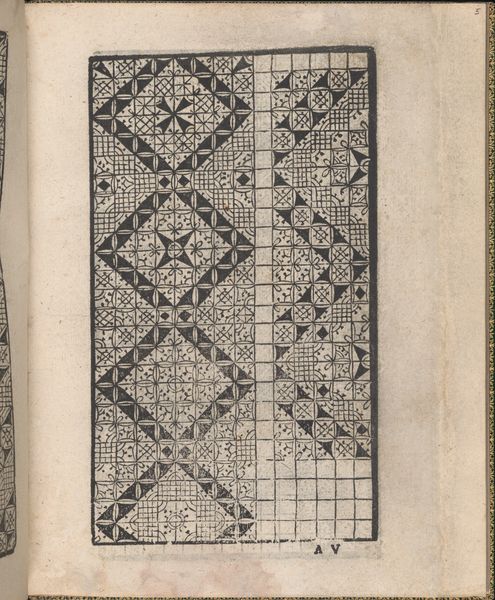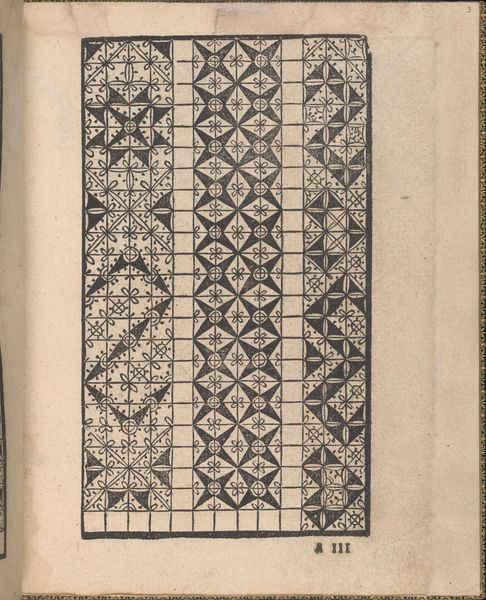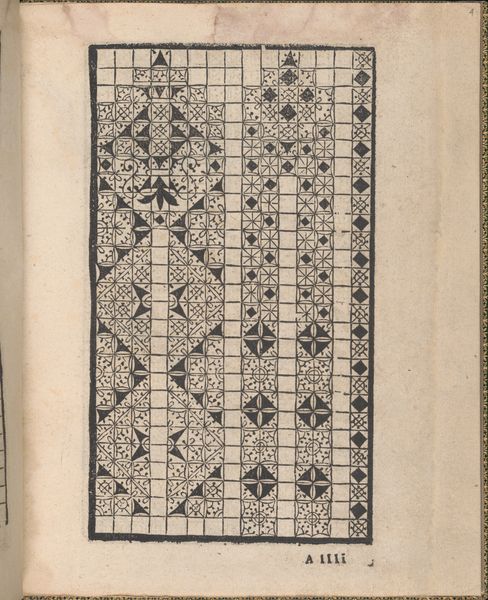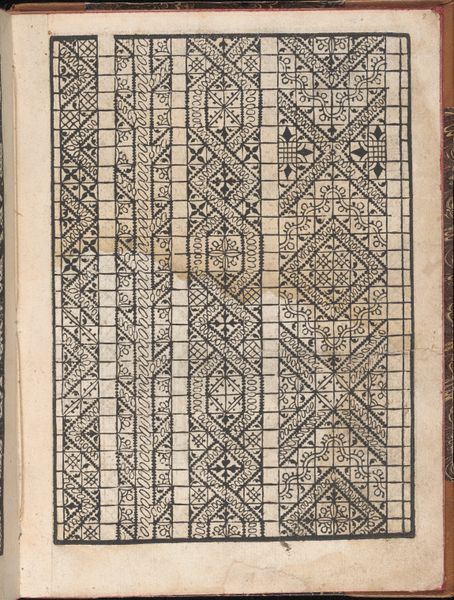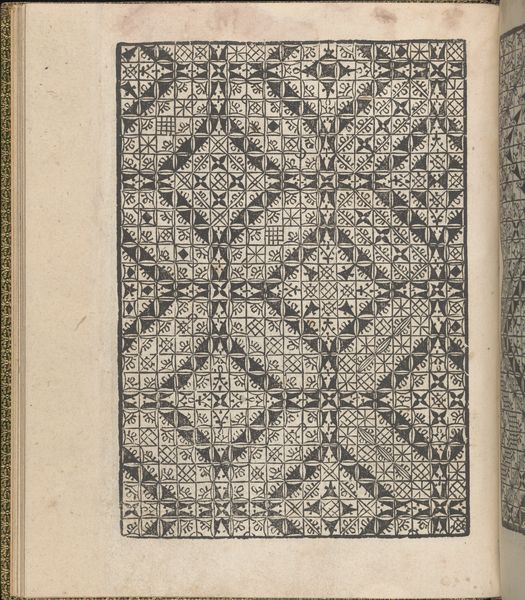
Giardineto novo di punti tagliati et gropposi per exercitio & ornamento delle donne (Venice 1554), page 7 (recto) 1554
0:00
0:00
drawing, ornament, print, paper, ink
#
drawing
#
aged paper
#
ornament
#
toned paper
#
ink paper printed
# print
#
book
#
old engraving style
#
sketch book
#
paper
#
11_renaissance
#
personal sketchbook
#
ink
#
geometric
#
ink colored
#
men
#
pen work
#
sketchbook drawing
#
sketchbook art
Dimensions: 7-5/8 x 6-3/8 x 1/4 in. (19.4 x 16.2 x 0.6 cm)
Copyright: Public Domain
Editor: This is a page from “Giardineto novo di punti tagliati et gropposi per exercitio & ornamento delle donne (Venice 1554),” published in 1554 by Matteo Pagano. It's an ink print on paper, showcasing intricate geometric patterns. I’m struck by the detail—it’s so precise, almost architectural. What’s your take on this piece? Curator: This print offers a fascinating glimpse into the lives of Renaissance women and the cultural values of the time. We see repeating geometric patterns intended as templates. They would have served a critical function for women in the 16th century. Editor: How so? Curator: Needlework and lacemaking were crucial skills. Not just for practical clothing but as markers of status and feminine virtue. Manuals like this one empowered women, at least within their domestic sphere. Who was allowed access to learning? And who controlled knowledge production? The book's title even promises "ornamento delle donne," essentially, ‘ornament for women’ but let's remember, that this was highly prescribed, often confined to domestic life and gendered roles. How do you feel knowing this gendered dimension to design production? Editor: I never thought of it that way. The designs themselves seem purely decorative, but knowing they were tools for women’s education—albeit within a specific social structure—makes them much more powerful. Did the act of creation, using these templates, also give women a voice, a means of self-expression? Curator: Exactly! In a world where women's voices were often silenced, the act of creating intricate needlework became a form of agency, a way to inscribe their identities into the material world. The textiles they produced were not just objects, they were narratives woven with skill and intention. And, we might see how similar these expressions are, when considering intersectional dimensions such as gender, today. Editor: I’ll definitely see pattern-making in a new way. Curator: Me too. Every encounter invites reflection on power and creation, then and now.
Comments
No comments
Be the first to comment and join the conversation on the ultimate creative platform.
